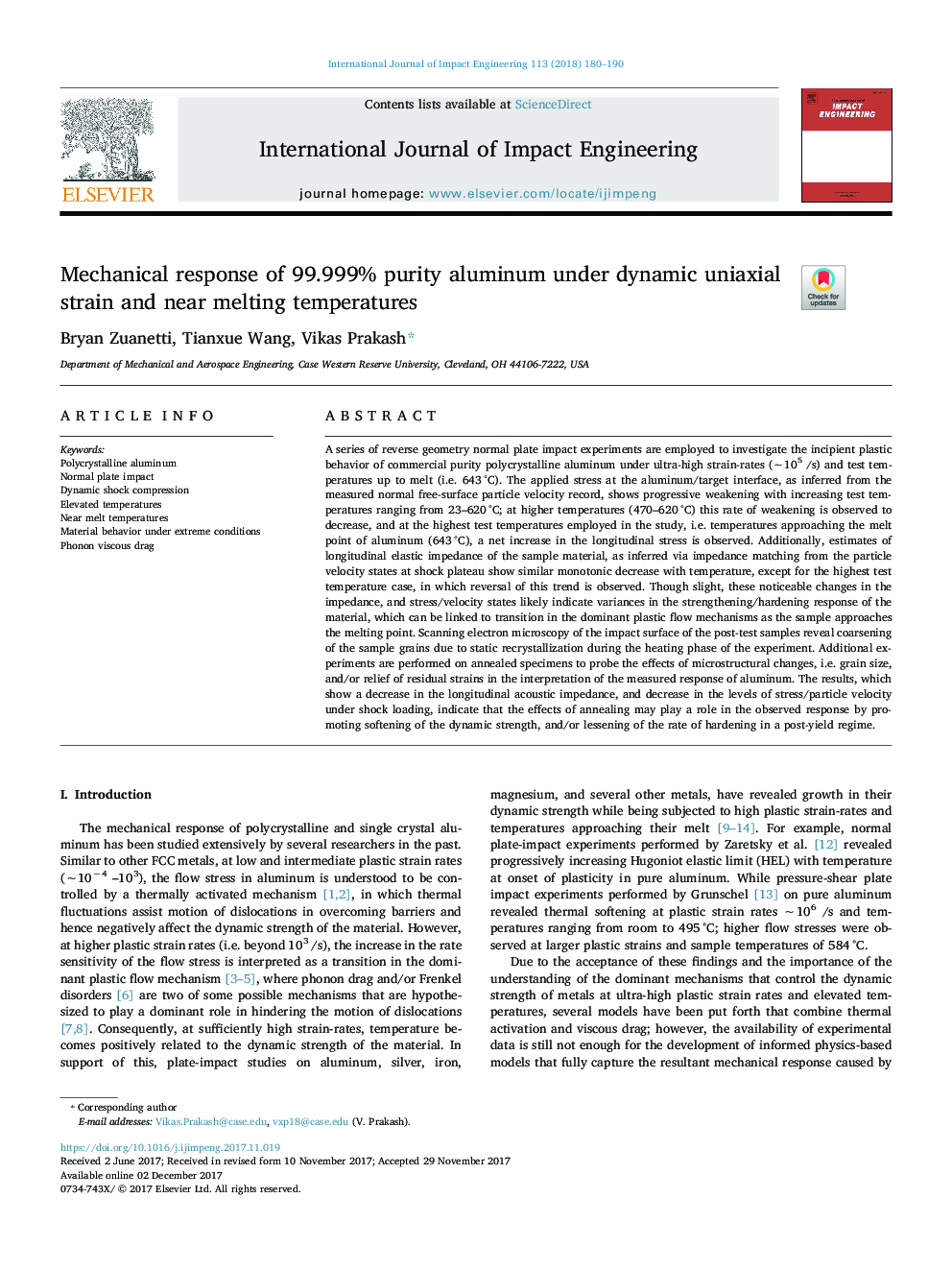| کد مقاله | کد نشریه | سال انتشار | مقاله انگلیسی | نسخه تمام متن |
|---|---|---|---|---|
| 7173001 | 1464038 | 2018 | 11 صفحه PDF | دانلود رایگان |
عنوان انگلیسی مقاله ISI
Mechanical response of 99.999% purity aluminum under dynamic uniaxial strain and near melting temperatures
ترجمه فارسی عنوان
واکنش مکانیکی آلومینیوم خلوصی 99.999٪ در شرایط تنش پویا و یکنواختی و دمای تقریبا ذوب
دانلود مقاله + سفارش ترجمه
دانلود مقاله ISI انگلیسی
رایگان برای ایرانیان
کلمات کلیدی
موضوعات مرتبط
مهندسی و علوم پایه
سایر رشته های مهندسی
مهندسی مکانیک
چکیده انگلیسی
A series of reverse geometry normal plate impact experiments are employed to investigate the incipient plastic behavior of commercial purity polycrystalline aluminum under ultra-high strain-rates (â¼105 /s) and test temperatures up to melt (i.e. 643°C). The applied stress at the aluminum/target interface, as inferred from the measured normal free-surface particle velocity record, shows progressive weakening with increasing test temperatures ranging from 23-620°C; at higher temperatures (470-620°C) this rate of weakening is observed to decrease, and at the highest test temperatures employed in the study, i.e. temperatures approaching the melt point of aluminum (643°C), a net increase in the longitudinal stress is observed. Additionally, estimates of longitudinal elastic impedance of the sample material, as inferred via impedance matching from the particle velocity states at shock plateau show similar monotonic decrease with temperature, except for the highest test temperature case, in which reversal of this trend is observed. Though slight, these noticeable changes in the impedance, and stress/velocity states likely indicate variances in the strengthening/hardening response of the material, which can be linked to transition in the dominant plastic flow mechanisms as the sample approaches the melting point. Scanning electron microscopy of the impact surface of the post-test samples reveal coarsening of the sample grains due to static recrystallization during the heating phase of the experiment. Additional experiments are performed on annealed specimens to probe the effects of microstructural changes, i.e. grain size, and/or relief of residual strains in the interpretation of the measured response of aluminum. The results, which show a decrease in the longitudinal acoustic impedance, and decrease in the levels of stress/particle velocity under shock loading, indicate that the effects of annealing may play a role in the observed response by promoting softening of the dynamic strength, and/or lessening of the rate of hardening in a post-yield regime.
ناشر
Database: Elsevier - ScienceDirect (ساینس دایرکت)
Journal: International Journal of Impact Engineering - Volume 113, March 2018, Pages 180-190
Journal: International Journal of Impact Engineering - Volume 113, March 2018, Pages 180-190
نویسندگان
Bryan Zuanetti, Tianxue Wang, Vikas Prakash,
